For what he has done for the world of Irish dance, Irish America is proud to honor Michael Flatley as our Irish American of the Year. Flatley talked to Debbie McGoldrick about his extraordinary journey and what’s next on the cards.
It’s hard to remember the days when Irish stepdancing wasn’t in vogue, when it wasn’t scintillating and sublime and sexy, when it wasn’t a global powerhouse that boasts earnings in the billions.
Michael Flatley, though, can certainly recall the times spent on the “pay your dues” circuit, traveling the country as a warmup for headliners like the Chieftains, desperately trying to sell to a wider audience the progressive brand of Irish dance he had been creating and performing for what seemed like an age.
Flatley, after all, didn’t make his everlasting mark on the world stage until well into his thirties. There were many lean years until the advent of Riverdance, the revolutionary Irish dance extravaganza that ushered in a new and exciting era for the art form when the show and Flatley, its flamboyant star, were unleashed on an unsuspecting but rapturous public in 1994.
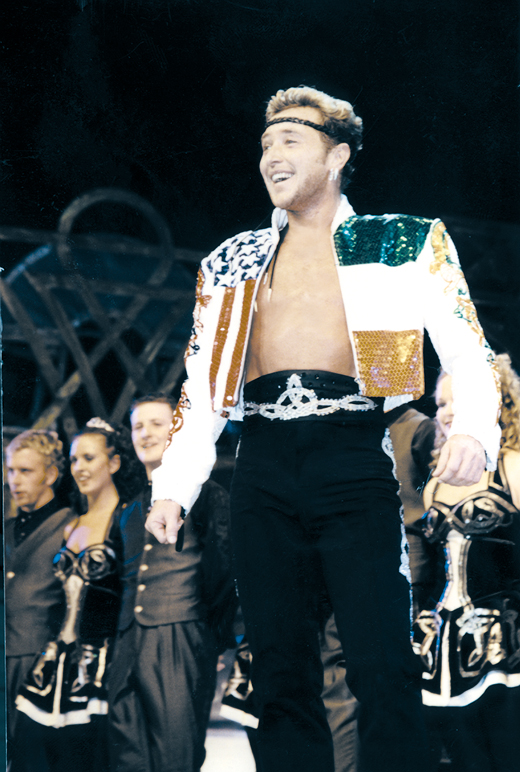
His time had finally come and not a moment too soon. “I’ve got no regrets,” Flatley told Irish America during a recent interview. “It’s been a hard road but a good road. Even the hard times are the best learning experience in the world.”
Flatley, 43, has clearly taken his lessons to heart. The kid from Chicago who started dancing at an early age now presides over a multi-million-dollar business empire anchored by his signature show Lord of the Dance, which he created from scratch in 1996, just after his departure from Riverdance.
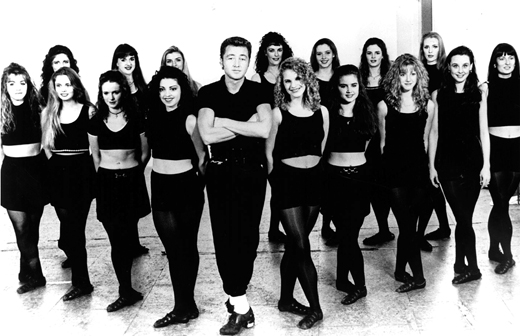
Lord of the Dance currently has three troupes performing around the world, and Flatley’s London-based Unicorn Entertainment company owns all the merchandising and video rights, and other lucrative spin-offs. The show has grossed hundreds of millions since its launch in 1996, and is one of the most recognized entertainment brands in the world.
But naturally, there’s more – there always is with Michael Flatley. Though he’s retired – for now, at least – from performing, Flatley’s world is a place where there will always be new horizons to conquer. His projects for the coming year include breaking ground on an Irish casino on land he’s purchased on the Las Vegas strip, a Broadway opening for Lord of the Dance, tinkering with a film script, and making an album of flute music. There’s always room for “pushing the envelope further and further. After all,” he adds, “nothing exceeds like excess.”
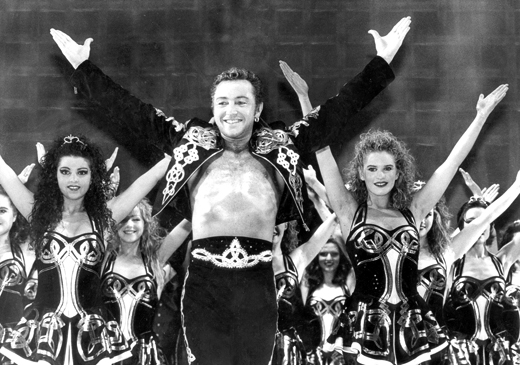
The Early Days
Flatley’s story isn’t exactly a rags to riches tale. He and his four siblings – a brother and three sisters – were born and raised in Chicago, where his father, Michael Senior, originally from County Sligo, owned a successful construction company. Michael’s mother, Eilish, a native of County Carlow, was a stepdancer of note in her day, and her son was determined to follow in her footsteps, even if Irish dance was a rather unorthodox pursuit for a young boy growing up in Chicago’s South Side.
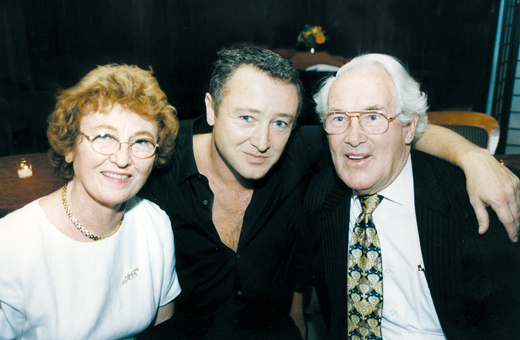
He started formal lessons at 11, relatively late for someone with aspirations as grand as Flatley’s. He quickly made up for lost time, winning his first Irish World Dance Championship when he was 17. He wrapped up his competitive career with an astounding 168 championships in various events, a record that hasn’t come close to being matched.
Medals and accolades were fine, but not nearly enough to quench his burning desire to be the best-known Irish dancer in the world. Actually, that wouldn’t have been a hard goal to achieve at the time – when he graduated high school in 1977 there were hardly any outlets at all for professional Irish dancers, and the thought of one actually becoming a household name was unheard of.
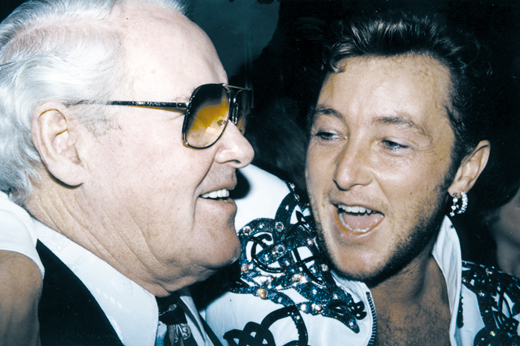
Flatley opened a dance school in Chicago, but teaching wasn’t his thing, so he eventually closed up shop. All he wanted to do was perform, and show the world how captivating the unique brand of Irish dance he liked to showcase – lots of body movement, plenty of outward emotion – could actually be.
“I always saw it differently. Even when I was competing I would always see things differently,” he says.
“You go to Ireland and people have so much pride and passion and personality, and they’re oozing with character, and it’s such a contradiction that they dance like this (he makes a stiff upper body move). I can understand it in competition, but when I got off stage I just wanted to cut loose. I remember the first time I did the Moonwalk on tour with the Chieftains and everyone just started screaming, and I knew there was no turning back. Dancing like that was too much fun.”
But in the 1980s, it was never a way to make a serious mark on the world. Flatley toured with the famous Irish traditional act the Chieftains, and did other side gigs, “just trying to get things kick started,” he says. He also married his Polish girlfriend – they’ve been divorced for several years – and based himself in California. But nothing much was really happening – not until Riverdance, that is.
By now the story has been often told – Flatley and another Irish-American dance star, Jean Butler, were asked to perform in 1994 as the intermission act for an annual European song contest called the Eurovision, which was being staged that year in Dublin. Their seven-minute high-octane routine was an intoxicating combination of revolutionary dance skill and breathtaking stage presence.
Irish dance hasn’t been the same since. Riverdance was expanded into a full-length feature show, featuring an original musical score and plenty of souped-up dance that was choreographed by Flatley. The production was an instant hit when it debuted in Dublin in 1995, with Flatley, naturally, as the star attraction.
All his dreams were coming true. He was finally famous, he was making plenty of money; people couldn’t stop talking about the way he danced. Life couldn’t be better…so he thought.
But then came the crash. Flatley and the Riverdance management team had an acrimonious parting of the ways on the eve of the show’s first sell-out London engagement in 1995; they claimed their star developed an out-of-control ego. He said he just wanted to maintain some sort of creative control over the show he helped to develop that quickly turned into a monster commercial and critical hit.
Riverdance replaced Flatley, and the show took London by storm. Flatley was devastated, wondering how it went so wrong so quickly.
It’s not an episode he cares to talk much about now, but he has nothing but words of praise for the show. “There’s been a lot of water under the bridge,” he says. “I don’t have any hard feelings now. I wouldn’t be where I am today if all of that didn’t happen, you know.”
There was also something else lurking in Flatley’s mind – an idea for another Irish show that would be even glitzier and edgier than Riverdance, one that he would create and choreograph from top to bottom, one that he would primarily finance and own. Given the overwhelming popularity of Riverdance, it seemed like there could be room for another show. Thus came Michael Flatley’s Lord of the Dance in the summer of 1996. And Flatley was right – there certainly was more than enough room for the two shows.
Lord of the Dance
“I always wanted to do something that was completely Irish,” says Flatley. “I wanted it to be a simple storyline, to have a whole range of colors and ideas and feelings, a good versus evil story, and that’s how Lord of the Dance ended up.”
After unveiling his baby at the Point Theatre in Dublin to enthusiastic audiences, Flatley hit the road, selling out in places like Wembley Arena in London, Madison Square Garden in New York, and cities all over the world. Michael Flatley was back with a bang, and he hasn’t looked back.
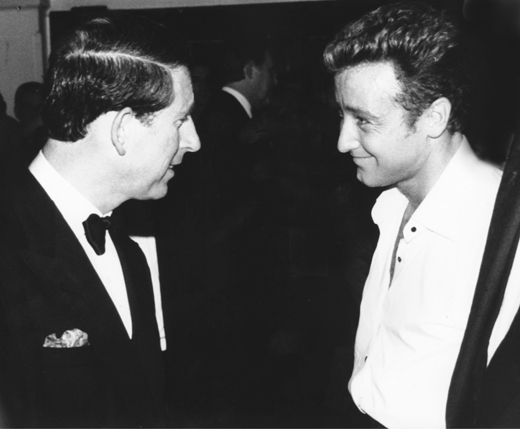
“From an artistic point of view, Lord of the Dance has given me a chance to express myself and bring to the world stage all of the ideas I’ve had in my head for a lot of years, which is real important to me,” he says. “And after all these years we’ve kept it clean and fresh and worked hard at maintaining the quality.”
There are currently three Lord troupes touring the world. Flatley, who has spent practically his whole life dancing at breakneck speed, bid adieu to the stage in the summer of 2001, after wrapping up a tour of the U.S. with his Feet of Flames spectacular, which is probably best described as Lord of the Dance on speed. But that desire to connect with audiences is brewing again, even though the physical toll at this stage of Flatley’s life is substantial. “I miss it and I would love to perform again,” he offers. “Right now I’ve got an offer on the table from China; they want me to perform in September. So we’re looking at that, and other cities like Tokyo and Moscow. China is a great place to go. Very few people get to perform there.”
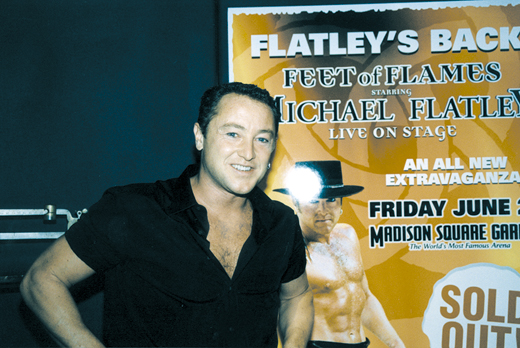
Though Flatley is intensely involved in his show’s business end of things, it’s obvious he’s not ready to spend the rest of his life crunching numbers.
Since the start of 2003, he’s been working out in Barbados. Though he’s always been a fitness buff, there’s a new urgency to his routine.
Flatley is deep into planning a new show that he says he will likely star in. With the millions he’s already earned, he could easily sit back and enjoy a luxurious retirement, but he’s just not ready to call it a day.
“I’ve been working on doing a really cool new kind of Irish-American show with a big patriotic American finish, kind of a ‘Yankee Doodle Dandy’, with great numbers,” he says. “I’ve been working on this for two years, and it’s pretty much time to pull the trigger. It will be a brand new, bigger and brighter version of what we do, with an American theme threading through it. People underestimate how powerful Irish America is.”
There is no definitive date for the production’s debut, though. Flatley, like everyone else, is waiting to see if war breaks out in Iraq.
“I think I have to put it on hold until the war is over,” he feels. “I have to be careful. The last thing you want in this day and age is anything that could be perceived as political.”
No matter. There are other projects that consume Flatley’s days. Lord of the Dance will likely make its Broadway debut this summer. Flatley was contacted by the Nederlander family, owners of the Gershwin Theater – ironically, that’s where Riverdance was housed during its Broadway run – about staging a limited run, and he’s excited.
“It’ll be great, we’re in the final negotiations now,” he says. “More than ever we’re getting calls from all over the world for the show, and we’re completely booked for the rest of the year and well into the next.”
Flatley, who is also an All-Ireland flute champion, has almost completed an album of flute music that will be released later this year, and the project has been a welcome diversion.
“It’s something I’ve been meaning to do for quite some time,” he reveals. “It’s very progressive and brings Irish music onto a different stage. Some people may follow it and many may not, but if nothing else we need to shake the trees and see what falls.
“There’s a dance track, and some rock-and-roll and blues and reggae; all kinds of things, really. But it’s mainly a traditional Irish album. I’ve got some great backing musicians, and we will probably make a video for MTV for at least one of the tracks.
“I’ve always loved playing the flute. It gives me great clarity. It helps me to think.”
Flatley is still interested in making a film, an idea he’s had on the backburner for quite some time, and he’s always toying with a screenplay.
“The script changes by the minute,” he says. “I’m so tired of seeing these Irish movies that are so depressing, with people cursing and shooting each other. I’m always a fan of doing something upscale and classier. The film won’t be my life story. We’ll see. It’s something that will happen when it happens.”
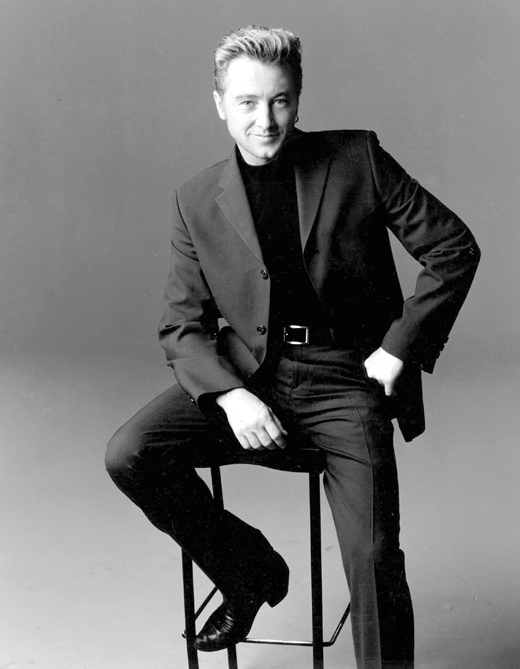
Las Vegas
Michael Flatley. Las Vegas. The two, with their devotion to excess and razzmatazz, are a perfect match.
Last November, Flatley inked a record deal with the Venetian hotel and casino on the Las Vegas strip. A troupe of Lord of the Dance is now housed in the Venetian, and will be resident for five years in a room specially tailored for the production. The price tag? A cool $250 million into Flatley’s coffers.
“Thank God,” he says. “It was a great deal for us and it’s doing so well there. One of the things about being in a resident show is that we can do things there that we can’t do when we’re touring. When we’re moving it around it’s twice as hard to do anything different. We’ve changed the show a lot, and I’m so proud of it.”
Flatley also purchased 16 acres of land on the strip last year, where the old Frontier hotel was located. He’s in the process of raising $600 to $800 million in financing to build an Irish-American-themed casino that will boast 2,200 hotel rooms and 100,000 square feet of gambling space.
“Right across the street is one of Steve Wynn’s casinos, and next to me is Donald Trump’s, so I’ll be sandwiched between those two boys. It’ll be interesting,” says Flatley.
“I want to have something Irish on the strip. I think we deserve to have a powerful presence there. I’ve designed most of it already, and I’m well on the way to securing the financing. I’m working with the architect that did Caesar’s Palace, so it’s great. We’re hoping to break ground in the fall, and then it’ll take about two years to complete.”
The Castlehyde
Flatley’s life isn’t entirely all work and no play, however. He spends most of the year living in his palatial French Riviera retreat. Some years back he also spent millions on an historical Irish castle in County Cork called Castlehyde. He’s currently renovating the structure and combating extremely strict planning regulations because of the estate’s landmarked status.
“I always joke that it’s easier to get permission from planners in Las Vegas to build a casino than approval in Cork to build a set of steps in Castlehyde,” Flatley laughs. “But that’s okay. Castlehyde is gorgeous. It’s a great feeling once you’re there. I had dinner with (former Irish Prime Minister) Albert Reynolds recently. We were talking about Castlehyde and he said I couldn’t have bought a more important structure in Ireland.”
Once renovations are complete, Flatley says he will live full-time in Castlehyde. “Ireland is the only place for me,” he says.
There’s another reason for that – last summer Flatley became engaged to his long-term girlfriend Lisa Murphy from Dublin. “So I did,” he says shyly. “Lisa is doing great. She puts up with a lot from me. She knows my life is mostly business and I don’t get to see her very often, but that’s just how life is.”
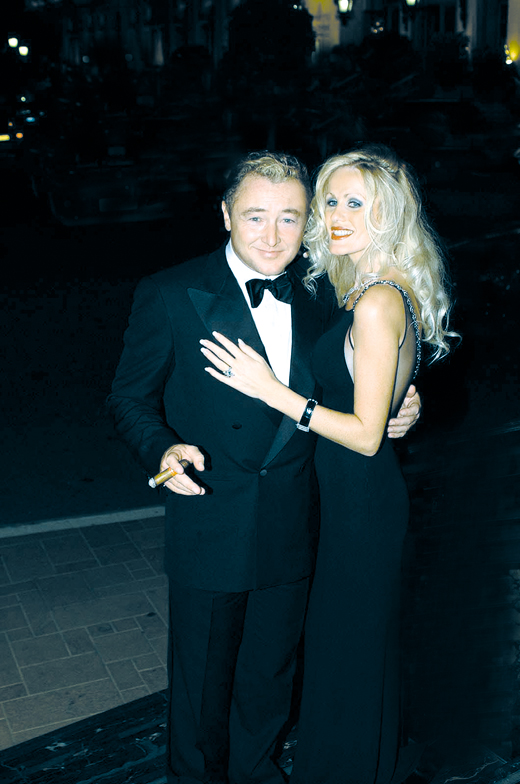
Flatley wouldn’t have it any other way. He’s come such a long way from Chicago, and the journey, though it’s had its ups and downs, has been exciting through and through.
He’d prefer that others judge how he’s helped to utterly change the way Irish dance is perceived throughout the world. “Time will judge, I guess,” he offers. “I think if nothing else I’ve encouraged people to take chances and to go a little farther, do more things, for better or worse. The world now knows that the Irish are here, and we’re here to stay.” ♦

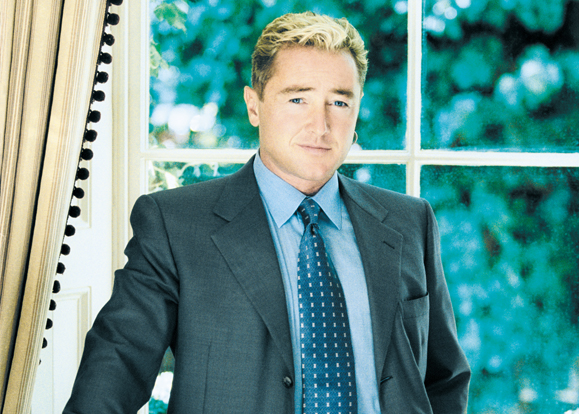


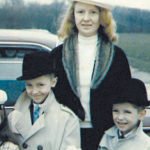
Leave a Reply